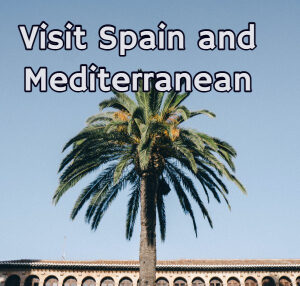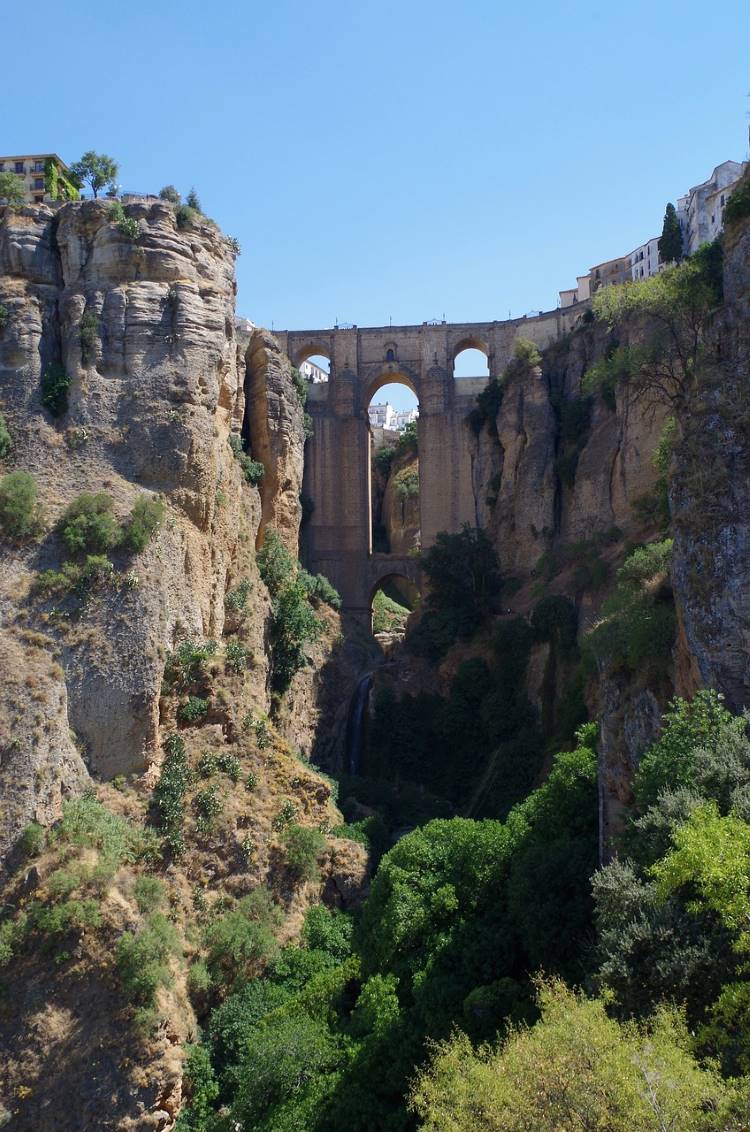Things to do in Ronda, Spain – explore the attractions and landscape around this white village
One of my favorite Pueblos Blancos or white villages in the Costa del Sol, Ronda sits above the El Tajo Gorge with most of the historic district perched on the cliffs edges with amazing miradors or viewpoints with panoramic scenic views below all the way to the coastal areas.
The city of Ronda is approximately 40 miles from Malaga City and is a fantastic day trip but I always recommend staying overnight or even a few days to really absorb the best of the city and enjoy the vibe and wonderful lifestyle you can experience with a longer visit. Considered more of a small town with a local populatoin of about 35,000 residents, you can see a lot of the amazing architecture, attractions, museums and cultural sites around town.
I’ve visited Ronda at different times and seasons and always love to go back and see the changing landscape and things happening around the city.
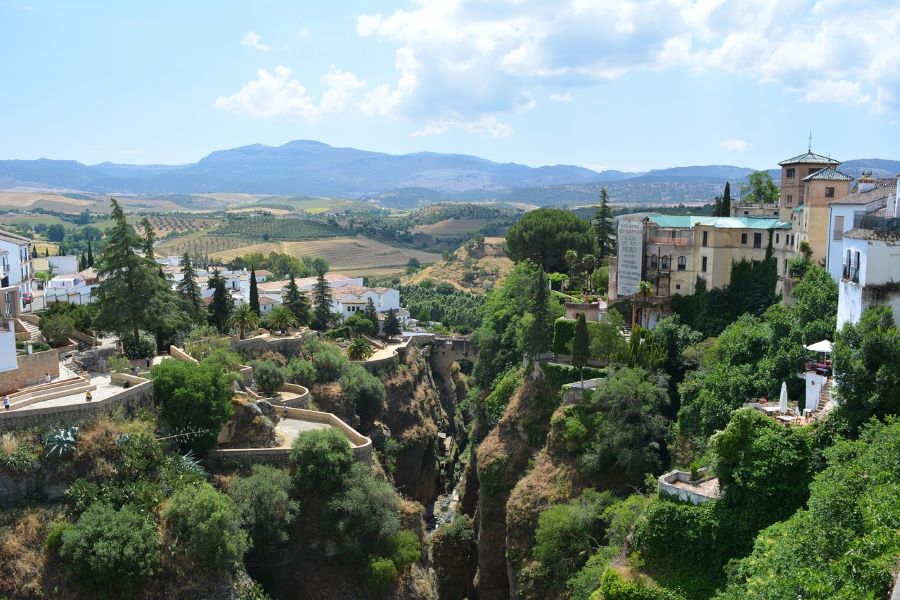
Where is Ronda located in Spain
Ronda is located in the province of Málaga, in the southern region of Andalusia, Spain. It sits high above the El Tajo gorge, which dramatically splits the town in two and is connected by a striking 18th-century stone bridge called Puente Nuevo. Surrounded by the Serranía de Ronda mountains, the town is about 100 kilometers west of the coastal city of Málaga. Its elevated position offers wide views of the surrounding countryside and has historically made it a strategic location. Ronda is also part of the famous “Pueblos Blancos” route, known for its whitewashed villages that dot the Andalusian hillsides.
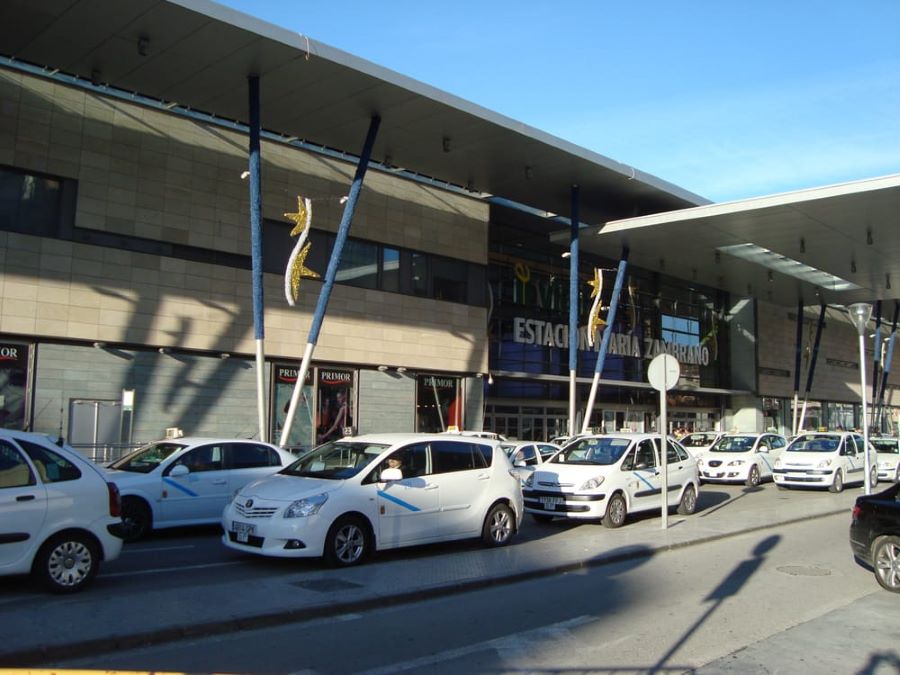
How to get to Ronda
Sure, here’s a clear outline on how to get to Ronda, Spain:
1. By Car
- From Málaga:
- Distance: ~100 km (about 2 hours)
- Scenic drive through the mountains via A-357 and A-367 or coastal route via AP-7 and A-397.
- From Seville:
- Distance: ~130 km (about 2 to 2.5 hours)
- Route via A-375 and A-374 through countryside and small towns.
- Pros: Flexibility to stop in villages along the way; great for photographers.
- Cons: Winding roads, especially the mountain stretch from Marbella.
2. By Train
- From Málaga or Seville:
- Take a train to Antequera or Bobadilla, then transfer to a regional train to Ronda.
- Direct trains from Málaga María Zambrano Station are also available but less frequent.
- Pros: Comfortable and scenic ride, especially the section near Ronda.
- Cons: Limited frequency; slower than driving.
3. By Bus
- From Málaga:
- Regular services run by Avanza or DAMAS; journey takes around 2.5 to 3 hours.
- From Seville:
- Buses also available, slightly longer journey.
- Pros: Budget-friendly, good for those without a car.
- Cons: Fewer departure times; less flexible.
4. By Tour or Day Trip
- Available from cities like Málaga, Marbella, or Seville.
- Often includes stops in nearby villages or wine tastings.
- Pros: Hassle-free; guide included.
- Cons: Limited time in Ronda; less personal flexibility.
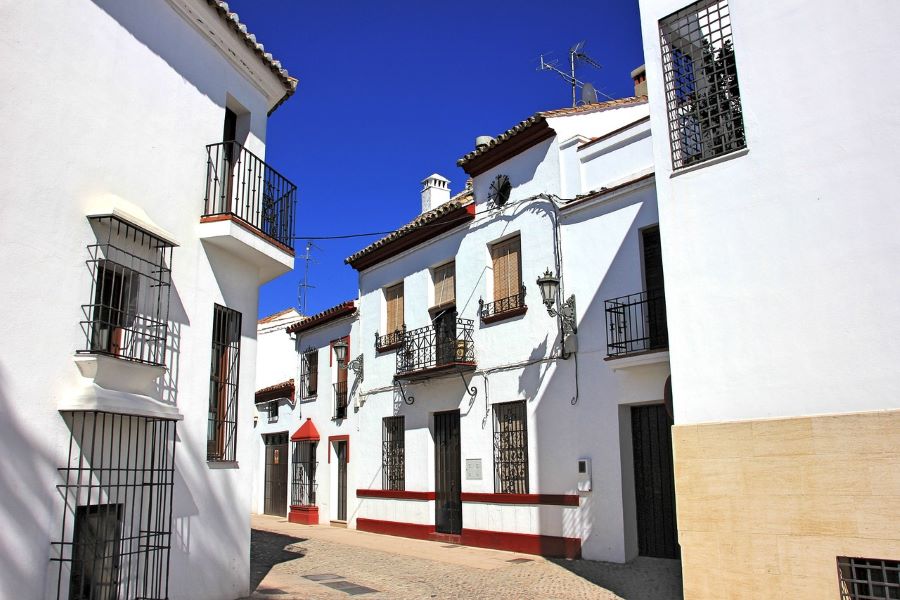
A Brief History of Ronda
Ronda has a deep and layered history that stretches back to prehistoric times, with evidence of early settlements found in nearby caves. The town was originally founded by the Celts and later became an important Roman stronghold called “Arunda.” During the Islamic rule from the 8th to the 15th century, Ronda flourished as a cultural and commercial center, with much of its old town reflecting Moorish influence still visible today in its architecture and street layout. After the Christian reconquest in 1485, the town transitioned under Spanish rule, but traces of its Islamic past remained ingrained in its identity. Over the centuries, Ronda became known for its resistance fighters during the Peninsular War and later as a source of inspiration for writers and artists, including Ernest Hemingway and Orson Welles, who were drawn to its dramatic landscape and romantic legends.
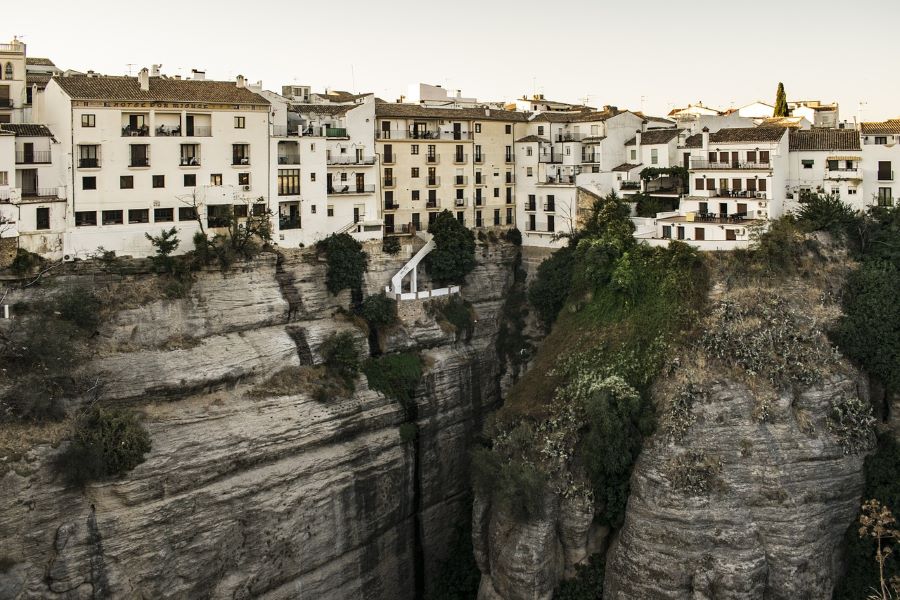
The top attractions and activities to experience in Ronda, Spain:

1. Puente Nuevo (New Bridge)
Puente Nuevo, or the New Bridge, is Ronda’s most famous landmark and a dramatic symbol of the city. Built in the 18th century, it spans the deep El Tajo gorge, connecting the old Moorish quarter with the newer part of town. The bridge rises nearly 100 meters above the Guadalevín River, offering sweeping views of the surrounding valley and cliffs. It took over 40 years to complete and was considered a major engineering feat of its time. Visitors can walk across it, peer down into the gorge, and even visit a small chamber inside that was once used as a prison. Its striking stonework and commanding presence make it one of the most photographed and visited sites in Andalusia.
- Iconic 18th-century stone bridge spanning the El Tajo gorge
- Offers dramatic views of the canyon and town
- Visit the viewpoint below or walk across the bridge for photo ops

2. El Tajo Gorge
El Tajo Gorge is a dramatic natural feature that slices through the heart of Ronda, creating a stunning divide between the old and new parts of the city. Carved over centuries by the Guadalevín River, the gorge drops nearly 100 meters at its deepest point and is flanked by steep, rugged cliffs. The Puente Nuevo bridge spans the chasm and provides one of the most striking views in the region. Walking paths along the edge and down into the gorge offer different vantage points, from panoramic views at the top to up-close perspectives of the cliffs and bridge from below. It’s a central part of Ronda’s identity and gives the town its unique, cliffside character.
- Natural ravine that splits Ronda in two
- Hike or walk along the edge for panoramic views
- Great for nature and landscape photography
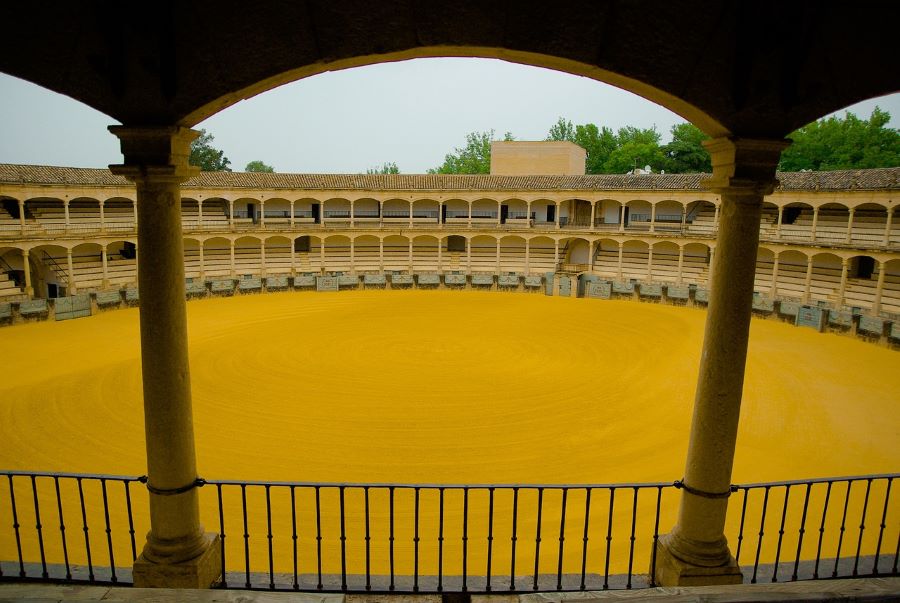
3. Ronda Bullring (Plaza de Toros de Ronda)
The Ronda Bullring, or Plaza de Toros de Ronda, is one of the oldest and most revered bullrings in Spain, completed in 1785. Built entirely of stone, it features a classic circular design with elegant arches and a two-tiered gallery that can hold around 5,000 spectators. While it still hosts occasional events, it’s more a cultural monument today than an active bullfighting venue. The attached museum explores the history of bullfighting, the evolution of Spanish horsemanship, and Ronda’s role in shaping modern bullfighting tradition. Even for those not interested in the sport, the architecture, historical exhibits, and connection to Spanish identity make it a worthwhile visit.
- One of the oldest bullrings in Spain, dating to 1785
- Includes a museum on bullfighting and local history
- Notable for its architecture and cultural significance
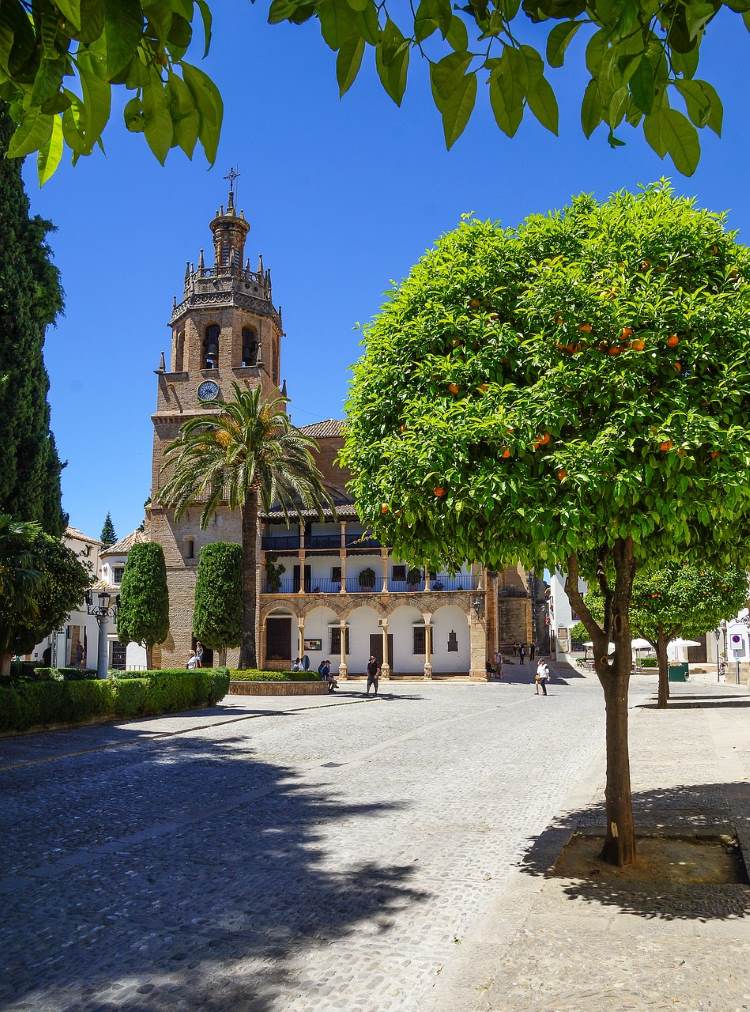
4. Old Town (La Ciudad)
Ronda’s Old Town, known as La Ciudad, is the historic core of the city and offers a quieter, more atmospheric experience compared to the newer sections. Characterized by its narrow cobblestone streets, whitewashed buildings, and well-preserved Moorish architecture, it reflects centuries of layered history. Highlights include the Palacio de Mondragón, once a Moorish palace, the ancient city walls, and charming plazas lined with small cafes and local shops. Walking through La Ciudad feels like stepping back in time, with a slower pace and a sense of authenticity that contrasts with more commercial parts of Andalusia. It’s a great area to explore on foot and absorb Ronda’s deep cultural roots.
- Explore narrow cobblestone streets and Moorish architecture
- Highlights: Palacio de Mondragón, Arabic Baths, and ancient walls
- Great area for wandering, cafes, and discovering hidden corners

5. Palacio de Mondragón
The Palacio de Mondragón is one of Ronda’s most notable historic buildings, blending Moorish and Renaissance styles in a former palace that now serves as a museum. Originally built in the 14th century as a residence for Moorish royalty, the palace features beautiful courtyards, tiled halls, and lush gardens with views over the gorge and countryside. Inside, the municipal museum offers exhibits on Ronda’s archaeological, cultural, and natural history, including Roman artifacts and Islamic art. While not overly large, the palace has a quiet elegance and offers insight into the architectural transitions and layered past that define Ronda’s identity.
- Former Moorish palace turned museum
- Features gardens, courtyards, and exhibits on Ronda’s history
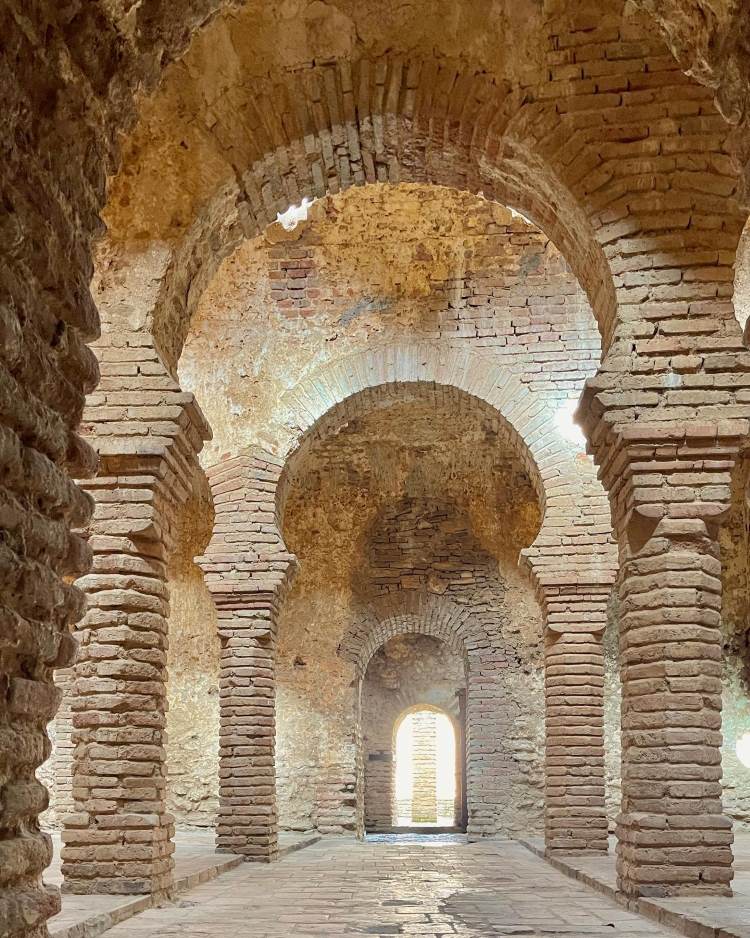
6. Arab Baths (Baños Árabes)
The Arab Baths (Baños Árabes) in Ronda are among the best-preserved examples of Islamic public baths in Spain, dating back to the 13th century during Moorish rule. Located near the old city walls and the Arroyo de las Culebras stream, they were cleverly designed to use natural water flow for their heating and cleaning systems. The structure includes the traditional layout of cold, warm, and hot rooms, with star-shaped openings in the vaulted ceilings that let in light and steam. Though no longer functional, the baths offer a clear glimpse into the daily life and architectural ingenuity of the time. Walking through the site gives a sense of the social and cultural importance of these communal spaces in Islamic cities.
- Well-preserved Moorish baths from the 13th century
- Insight into Islamic-era public bath culture and architecture
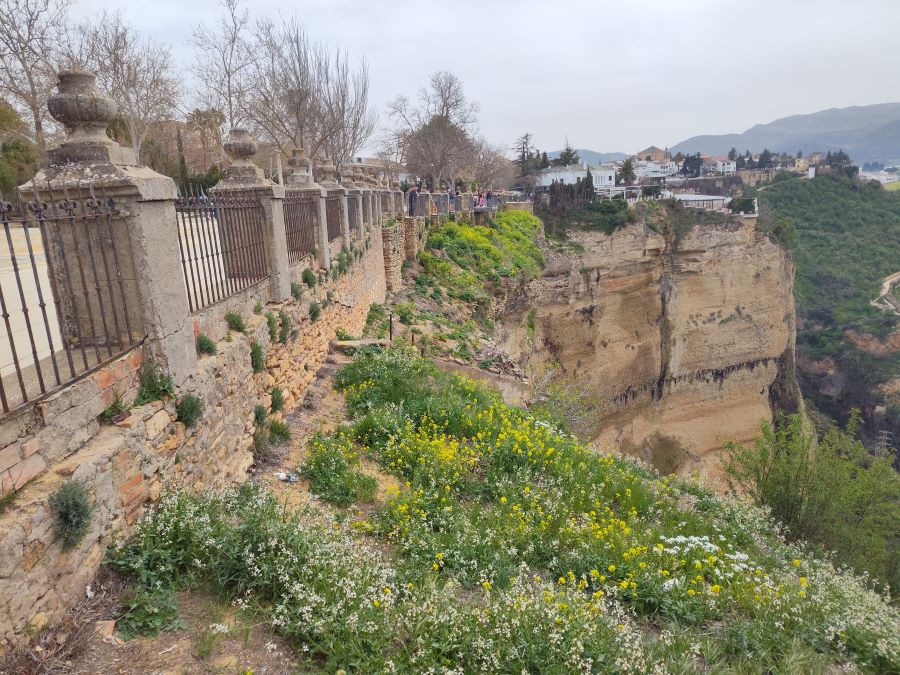
7. Alameda del Tajo & Mirador de Ronda
- Peaceful park with walking paths and scenic viewpoints
- Ideal for a relaxing stroll with cliffside views
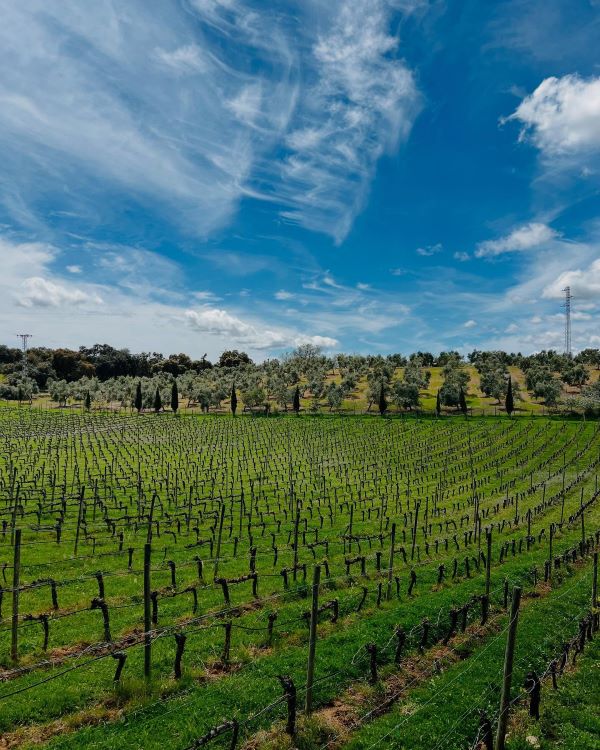
8. Wine Tasting and Local Bodegas
- Visit nearby wineries for tastings of Ronda’s local varietals
- Many offer tours and pairings with regional cuisine
1. Overview of Ronda’s Wine Region
- Part of the Serranía de Ronda wine region within the Málaga DO
- Elevation and cooler mountain climate produce unique, high-quality wines
- Known for red blends (Tempranillo, Syrah, Garnacha) and some white varietals
2. Popular Bodegas to Visit
- Bodega Joaquín Fernández
- Organic wines, vineyard tours, and tastings
- Family-owned with beautiful countryside views
- Descalzos Viejos
- Located in a restored 16th-century monastery
- Scenic setting and historical atmosphere
- Bodega García Hidalgo
- Small-scale, hands-on experience
- Includes tapas pairings and vineyard walks
- Bodega F. Schatz
- Pioneer of biodynamic winemaking in the region
- Focuses on lesser-known varietals and eco-friendly methods
3. Wine Tasting Experiences
- Guided tastings with explanations of grape varieties and processes
- Pairings with local cheeses, jamón, and olive oil
- Tours often include vineyard walks and cellar visits
4. Booking & Tips
- Most bodegas require advance reservations
- Ideal to rent a car or book a guided wine tour from Ronda
- Many experiences are available in English and Spanish
5. Why It’s Worthwhile
- Less commercial than other Spanish wine regions
- Intimate, authentic experiences with winemakers
- Combines well with Ronda’s scenic and cultural attractions

9. Hiking & Outdoor Activities
- Trails around the Sierra de Grazalema and El Tajo area
- Popular for walking, light hiking, and scenic drives
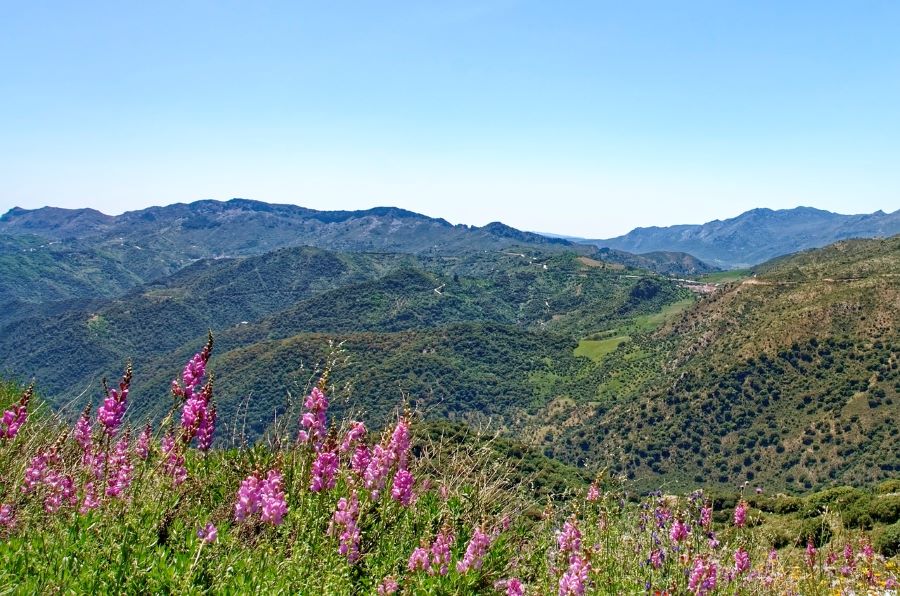
10. Day Trips from Ronda
- White villages like Setenil de las Bodegas and Grazalema
- Great for short excursions and photo stops

11. Enjoy a local meal and specialty dish
If you’re planning on having a meal in Ronda, look for these specialty foods and dishes to try around menus in town of regional and local foods:
1. Local Meats and Game
- Rabo de Toro (Oxtail Stew)
- Slow-cooked in red wine, garlic, and spices
- Rich, tender, and often served with potatoes or rice
- Venado (Venison) and Wild Boar
- Common in mountain dishes, often grilled or stewed
- Served with seasonal vegetables or mushroom sauces
2. Traditional Andalusian Dishes
- Salmorejo
- Thick tomato and bread-based cold soup, topped with jamón and egg
- Heartier than gazpacho, often eaten as a light starter
- Gazpacho Andaluz
- Refreshing cold soup made with tomato, cucumber, peppers, and olive oil
- Perfect for warmer months
3. Local Tapas
- Morcilla (Blood Sausage)
- Typically grilled or served with caramelized onions
- Chorizo al Vino
- Spicy sausage cooked in local red wine
- Tortilla Española
- Classic Spanish potato omelet, often served as a tapa
4. Cheese and Olive Oil
- Payoyo Cheese
- Made from goat or sheep milk in nearby Grazalema
- Creamy and slightly tangy; great with local wine
- Ronda Olive Oil
- Rich, fruity oils from nearby groves, often served with bread or drizzled over dishes
5. Sweets and Desserts
- Yemas del Tajo
- Local sweet made from egg yolks and sugar
- Small, rich, and traditionally handmade
- Tarta de Almendra (Almond Cake)
- Moist cake with a strong Moorish influence, often spiced with cinnamon
6. Local Wines and Drinks
- Ronda Red Wines
- Made from grapes like Syrah, Tempranillo, and Garnacha
- Anís or Local Liqueurs
- Often enjoyed as a digestif after meals
Let me know if you’d like recommendations for specific restaurants or tapas bars in Ronda.
Tours to Ronda
If you are looking for guided tours and drivers to do most of the work and touring Ronda and other surrounding landmarks, check out these recommended tours below:
Málaga: Ronda & Setenil de las Bodegas & optional Sunset
Tour two white villages including the main attraction at Ronda on this 10 hour day tour and priced well
From Malaga: Ronda and Setenil Tour with Scenic Train
Two white village tour with a scenic train ride on a 9 hour day tour from Malaga
Marbella/Estepona: Ronda and Setenil de las Bodegas
All day tour to three main towns and landmarks on this guided tout
Further Reading – Attractions and cities in Costa del Sol
Conclusion to top things to do in Ronda
Visiting the Pueblo Blanco or Ronda is like stepping into a living history and culture of a beautiful cliffside town in the foothills of the Costa del Sol.
Beyond the main attractions, Old Town and new town, Ronda unveils its own secrets, from hidden courtyards, historic buildings, stunning vista points to bustling plazas, amazing views from the Puente Nuevo, the wonderful miradors and many other landmarks.
Thanks for checking out this post on Visiting Spain and Mediterranean, please come back again for other travels around Spain.
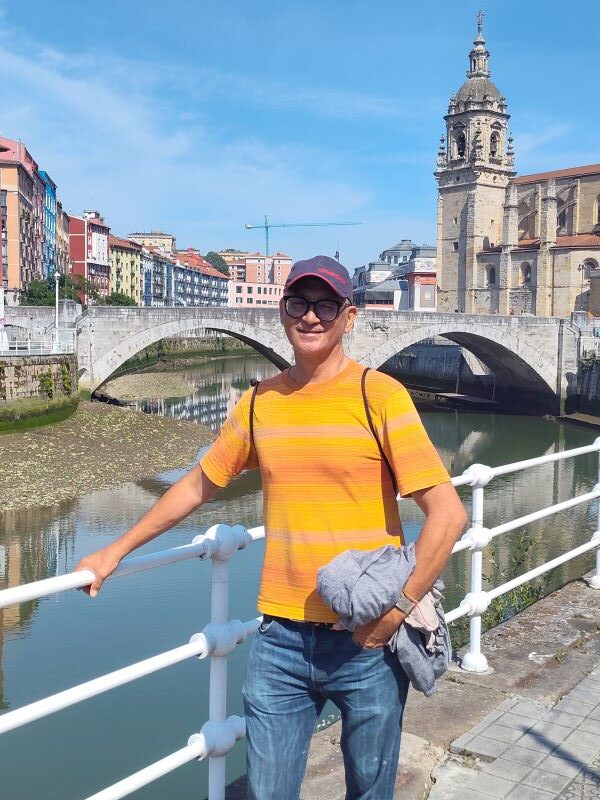
About author – Noel Morata
After relocating from the United States to Andalusia in 2018, I’ve made it my mission to discover every corner of Spain. Based just east of Granada, I’ve spent over 12 months exploring Málaga province, visiting each attraction featured in this guide multiple times across different seasons. My background in Spanish cultural studies and five years of residence in southern Spain have given me unique insights into the region’s historical significance and local customs. I regularly update my guides with the latest information gathered through personal visits and relationships with local tourism officials and finding out what’s new and exciting to visit in each destination.
Disclosure – some of the links above to various tours, transportation and hotels are affiliate links that benefits our site if you book here and we appreciate your support. The links are competitive, and you are not paying above what other affiliates provide.
